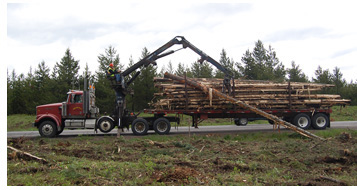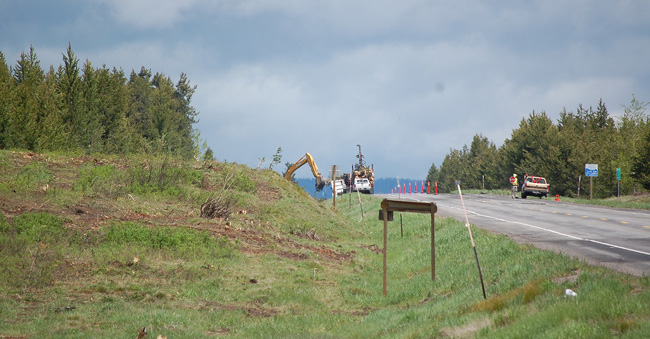

Removing trees substantially improves safety
along U.S. 20 corridor near Island Park
Removing trees along U.S. 20, south of Island Park, significantly improved traffic safety in the years since the tree removal, the Idaho Transportation Department announced. Clearing trees on each side of a seven-mile stretch of the highway several years ago, to create greater visibility for drivers, has helped reduce crashes by 31 percent.
The transportation department has no plans to remove more trees in the Island Park area at this time.
Crews removed trees in 2010 to reduce ice buildup on the road from shade, eliminate the potential for trees falling onto the roadway, and expose feeding wildlife contemplating a dash across the highway.
Comparing 43-month periods before and after tree removal revealed that crashes with other vehicles fell from nine to six, crashes with trees or embankments fell from 21 to nine, and crashes with animals fell from nine to five. Crashes with other vehicles generally involved icy surfaces.
Increased applications of road salt during the last couple of years also contributed to reduced crashes along the stretch where the trees were removed, which is between milepost 369 and 376.
A recent transportation department study showed that elk and moose still cross this stretch of highway with regular frequency, and that horizontal cover such as a wooded area and disappearance distance — the distance it takes animals to completely conceal themselves — are important resource-selection criteria for the wildlife. Other studies have shown that removing vegetation in key locations can help reduce wildlife-vehicle collisions.
The idea for tree removal originated with maintenance workers, who noted that exposing pavement to sunlight would help reduce ice buildup on the parts of U.S. 20 in shady areas, especially within the project area. Crews cleared trees back 100 feet from the center of the roadway on each side of the state right of way.
Clearing trees not only reduced slick surfaces but also enabled motorists to see wildlife well ahead of possible crossings. In addition, it eliminated flashes of sunlight through the trees, which distract drivers who travel through the forest in morning and evening hours.
District 6 recently published methodology and results of the tree-removal project. "The experiment indicated a modest increase in cumulative sun exposure on the road surface, which made a difference," Project Manager Eric Verner said.
Verner collected field measurements of cumulative direct sunlight at 15 locations in the project area in 2009, and 2013. Measurements enabled engineers to compare results with shade-model baseline predictions. He modeled tree-cutting scenarios in three dimensions using a Geographic Information System, considering road curvature, topography and season.
Project planning commenced in 2007 and included coordination with officials of the U.S. Forest Service. Help from USFS officials enabled transportation department officials to retain experienced logging contractors to complete tree removal.
Contractors Eagle Rock Timber Inc., of Idaho Falls, and Wilcox Logging Inc., of Rexburg, hauled logs and chipped other woody material for commercial markets. Contracts were $75,000 and $54,500, respectively.

Published 12-19-14